When you think of the quintessential men’s haircut of the 1950’s and 1960’s, you probably envision the shiny, clean-cut, and voluminous pompadour on icons such as Elvis Presley, Johnny Cash, James Dean, Little Richard, Robert Redford, or Frankie Valli and The Four Seasons. It was a popular style among musicians and actors in that era, but still remains trendy for those looking to sport a retro or rockabilly vibe.
What is a pompadour?
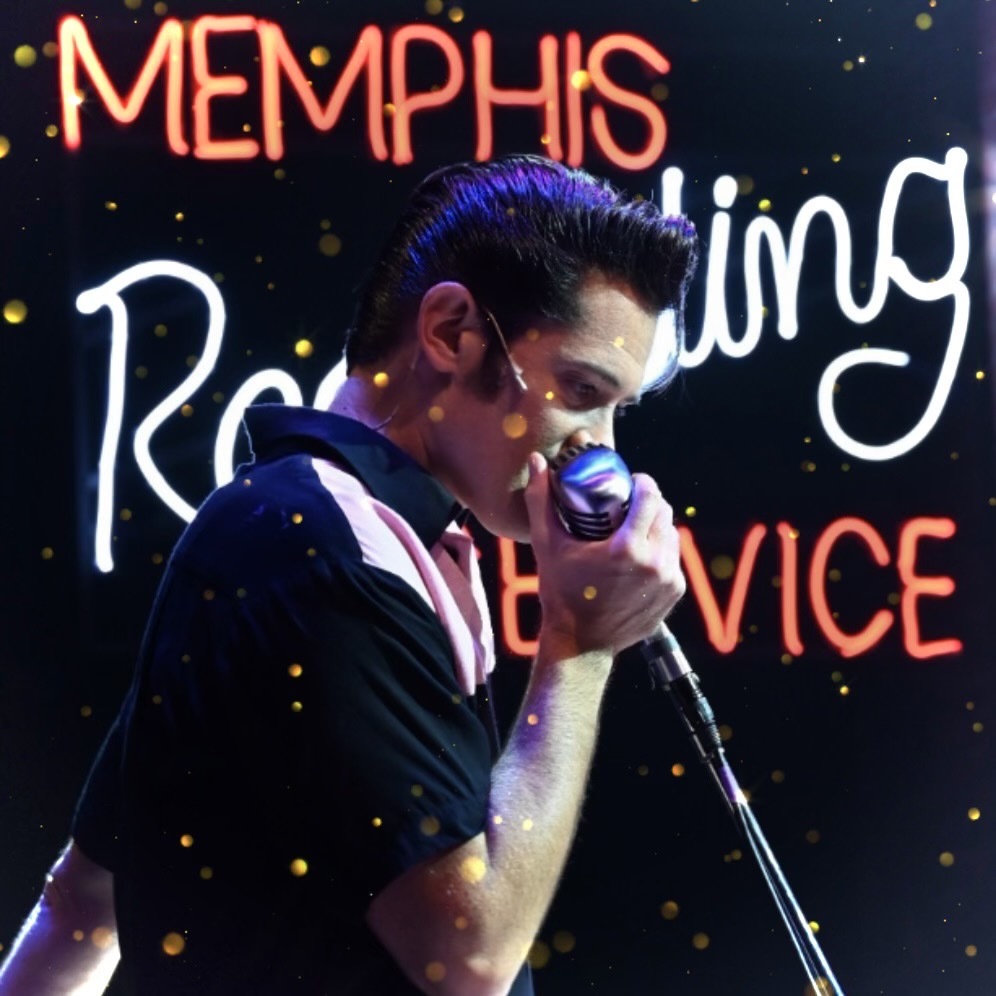
The pompadour involves combing the hair upwards and back creating a high mound, or quiff, on top with the longer hair at the front. Typically, the hair is cut longer on the top and shorter on the sides, as the sides are neatly combed back tightly and cleanly to emphasize the “pomp” on top.
The founder of the greatest men’s hair style in history is Madame de Pompadour. But wait, a woman? That’s right — Madame de Pompadour, the chief mistress of the French King Louis XV, is the mother of the pomp. But, that didn’t stop the dramatic hairstyle from becoming beloved primarily by gentlemen around the world over two centuries later.
The pompadour’s first great male ambassador in the 1950’s was the King of Rock ‘n’ Roll: Elvis Presley. Presley proved that this heightened hairdo wasn’t just for girls.
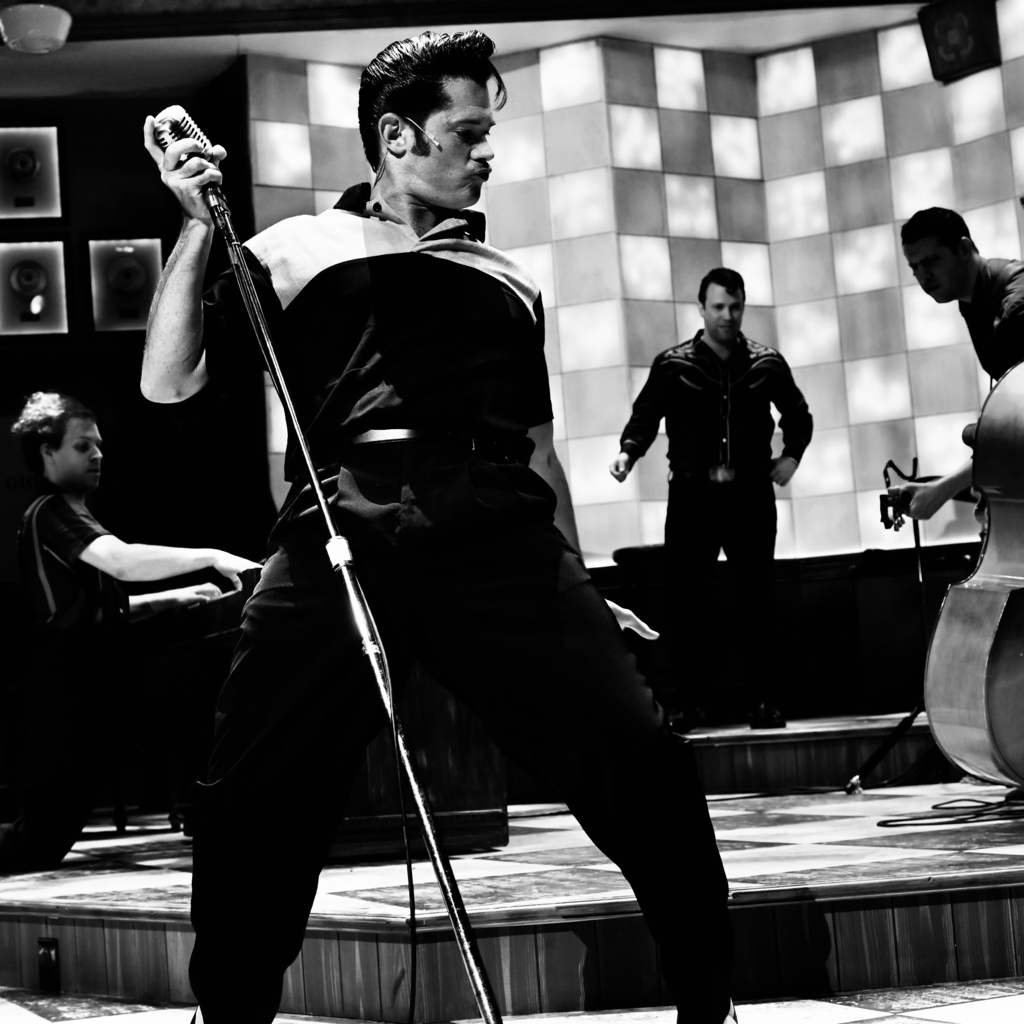
It’s possible that the fact that the pompadour was considered fashionable for women as recently as the 1940’s was the reason Presley was drawn to it in the first place. The King’s love of the style was likely rooted in the larger-than-life exaggerated shape, but also could have been a salute against conservative social norms.
“We don’t think of Elvis as having a part in his hair but he certainly did. Hair pushed straight back will have very little volume and shape in the front. The basic aspect of a pompadour is high and forward in the front, while being low and slicked in crown, back, and sides. But to achieve the height in the front, some angles besides straight back must all come together,” he adds. Rochette has also played the role of Elvis in the shows Million Dollar Quartet and All Shook Up.
“Pompadours are a lot more than just slicked back hair. In fact many/if not all pompadours have a hard part,” says John Rochette, who has played Tommy DeVito and other roles in Jersey Boys on Broadway and Off-Broadway in New York City, and on the Broadway National Tour.
The Jersey Boys rock the pompadour
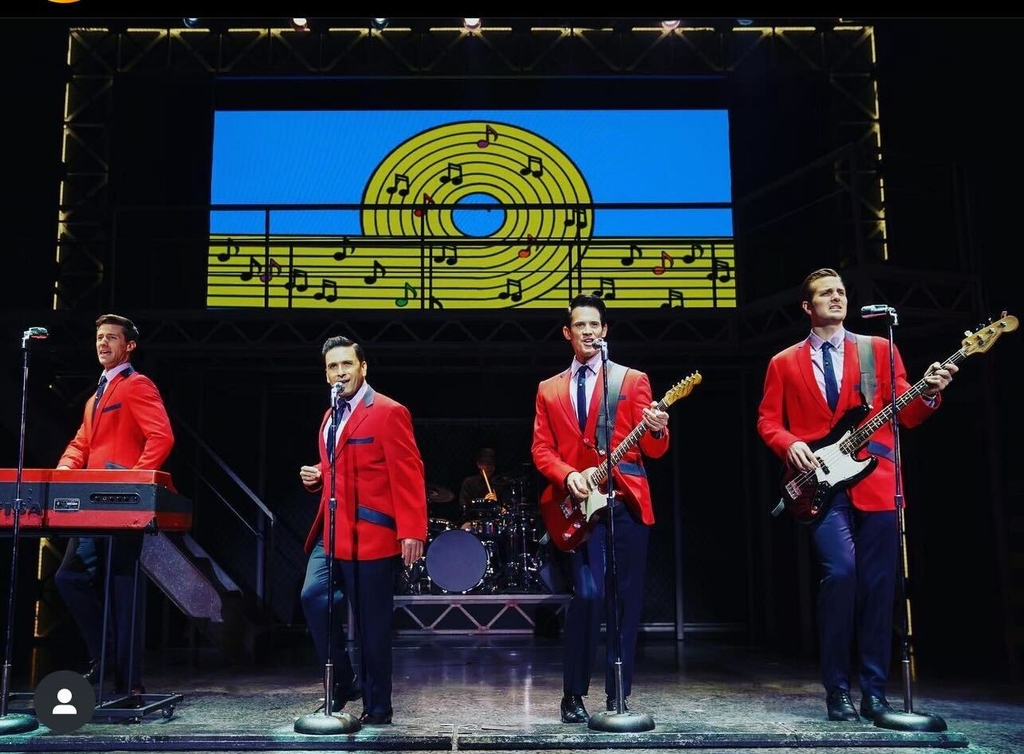
Frankie Valli, an icon of the pompadour, was actually a hairdresser named Francesco Castelluccio before becoming the band leader of The Four Seasons. “I loved doing hair because it was very, very creative. But working in a shop was just not for me. I’ve always considered myself to be a creative person,” said Frankie Valli in an interview with NPR. “And Joe Pesci used to cut my hair… Joe Pesci and I are really close friends,” he added.

Valli and his bandmates styled their hair in a pompadour throughout the group’s music career. So, it’s no surprise that the actors portraying The Four Seasons in the Broadway show Jersey Boys know how to mold and shape the perfect pompadour for the stage.
Playboy spoke to five Jersey Boys alumni to get their advice on how to achieve the perfect pompadour.
“Creating the perfect 1950’s/1960’s pomp night after night has been one the privileges of my career,” says Rochette. “What I find is creating the perfect height, slick, shine, and waves will be different for everyone. For good reason, we all regard Elvis as the holy grail of 1950’s hair. But mind you, the man was essentially 18 years old when his most famous hair pictures were taken. Trying to copy an 18 year old’s hair volume, density, and hairline when you’re 30 or 40 can offer some challenges.”
“We always joke that Jersey Boys is actually a show about hair,” says Cory Jeacoma, who has played the role Bob Gaudio Off-Broadway at New World Stages and on the Broadway National Tour. “So doing things like limiting shampoo use to provide texture, adding base products at the top of day so your hair can marinate before the show, and even spending far too much time on the pompadour is totally acceptable and in fact encouraged.”
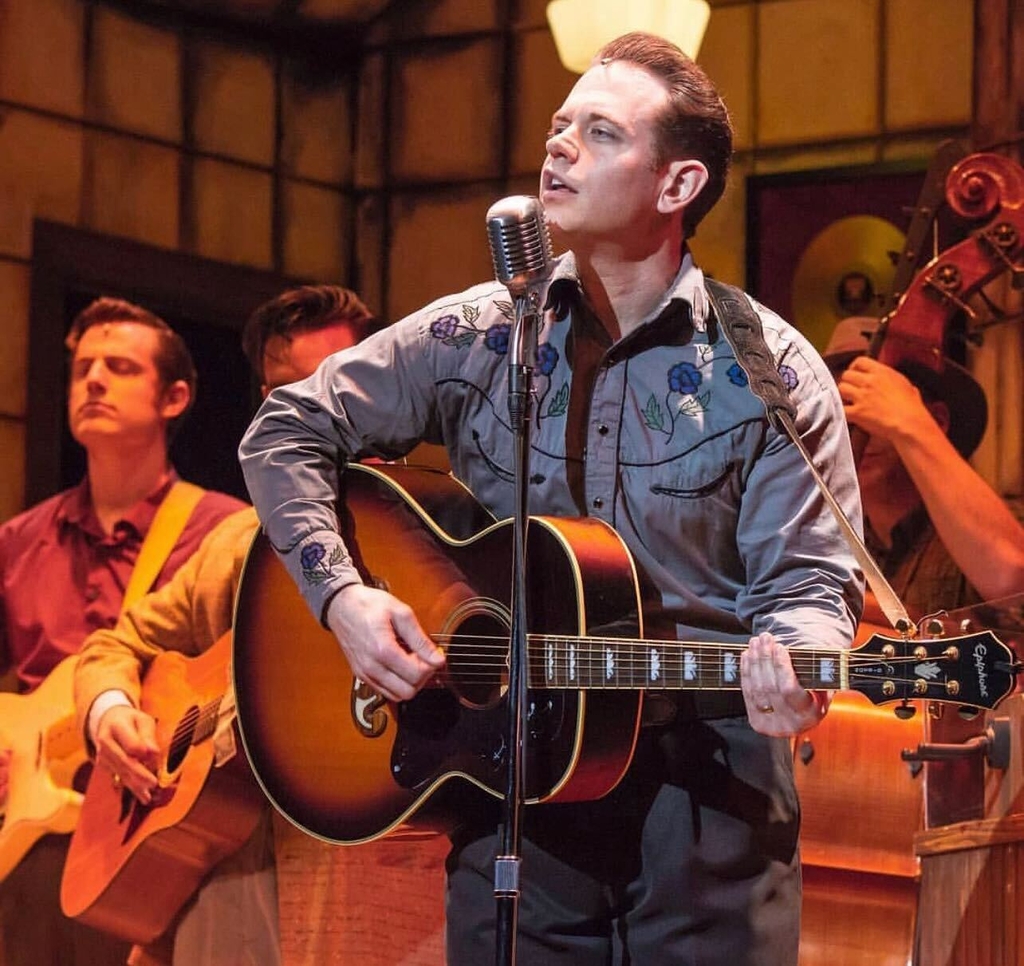
Andrew Frace, who has been a part of the cast of Jersey Boys on and off for the past 15 years off-Broadway, on the Broadway National Tour, and in the Las Vegas residency, has played almost every role in the show as a swing. He’s also frequently played Johnny Cash in Million Dollar Quartet and recently covered the role of Cash in the pre-broadway developmental workshop Johnny and June. So, it’s safe to say that Frace has worn his hair in a pompadour for more than a decade.
“There’s a reason that the pompadour is a classic hair style. There’s something to be said about a look that never fades. It works for any occasion from the red carpet to a mug shot, and through every era,” Frace says. “Like a good country song, simplicity matters — my favorite songs are typically three cords and the truth in structure. That’s the same formula for the perfect pompadour. Keep it simple, keep it clean, and keep it timeless.”
Every Jersey Boys actor has their own process and product recommendations, so follow the tips of the actor who has hair most similar to yours.
What are the best products to create a pompadour?
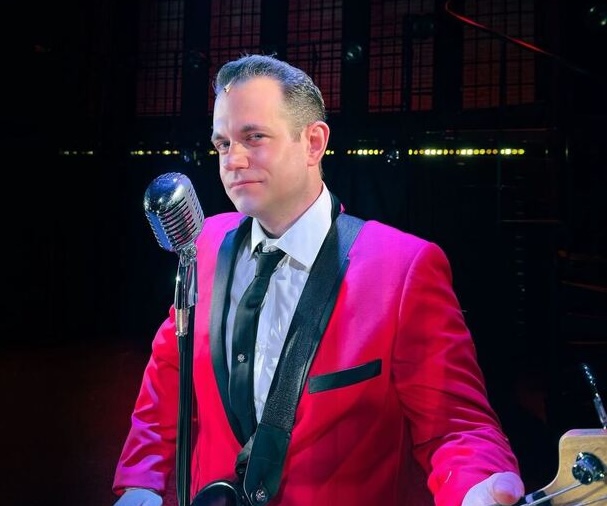
Rochette explained that different people need different products based on their thickness, length, and texture. “Elvis was young and had tons and tons of thick hair with a low front hairline. He could use very greasy, oil-based, heavy products. Some gentleman have thinner, more dense hair, so they need to use less oily, more lightweight products. Too heavy a product will cause the hair to have no volume and look flat,” he says.
“I personally use any kind of foam mouse on my wet hair, style, and then let it dry to set. I then use American Crew FIBER deep in the roots to hold, followed by a softer and shinier pomade to rub on the outer layer of my hair to help mold the shape — but not on the roots. The last product that I use is a strong-hold hairspray like Got2Bglued,” Rochette adds.
Frace uses Suavecito Pomade Firme (Strong) Hold, Moroccanoil Luminous Hairspray in the extra strong hold, and finishes with Toppik Hair Building Fibers to fill in any gaps and make his pompadour look full.
“I have heard great things about using a texturing sea salt spray and/or texture powder as a pre-styler. Whatever you do, make sure you are using a volumeizing shampoo and conditioner. Talk to your trusted stylist about what products they can recommend for your unique head of hair,” says Frace.
Jonathan Cable, who has played the role of Nick Massi off-Broadway, on the Broadway National Tour and in the recent Las Vegas residency, says that he uses American Crew High Hold/Low Shine Fiber pomade and TRESemmé Extra Hold hairspray. “Don’t be hesitant to spend some time seeing what works for you. Part it the opposite way and play with different products.”
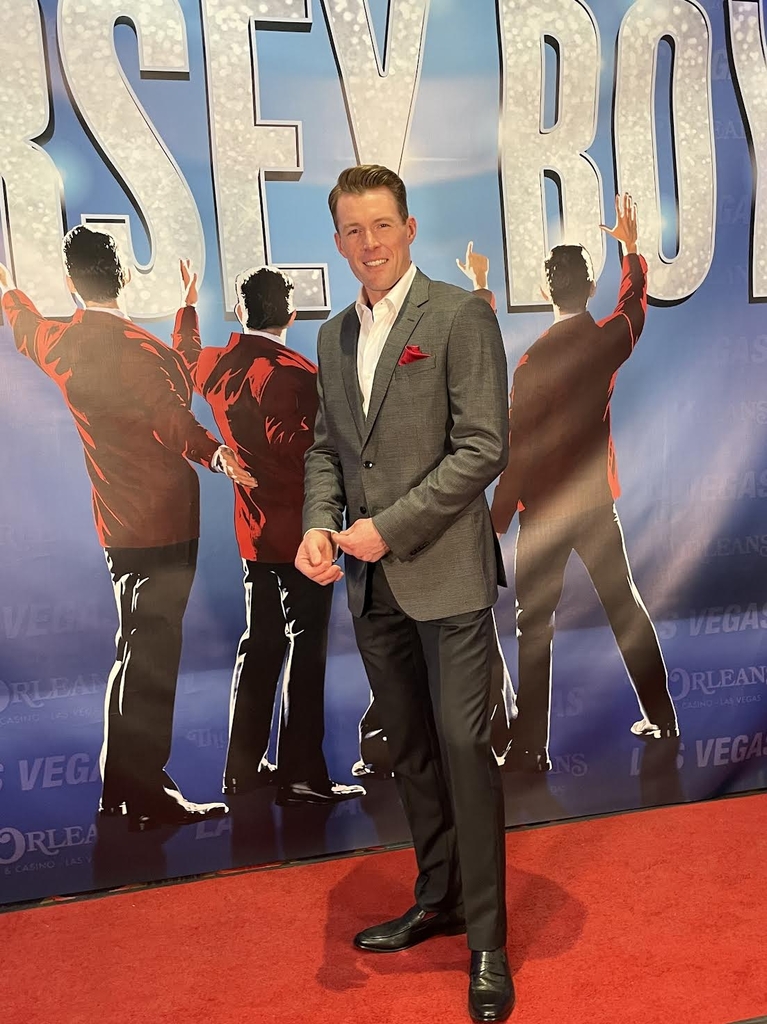
Jeacoma also uses the same American Crew Fiber pomade and TRESemmé Extra Hold Hair Spray product lineup as Cable. “The key to a good pomp is not only the products you use, but the order. I start with the finest H2o — from the sink is absolutely acceptable — and get my hair just damp enough, but not too wet. Then I get about a nickel-sized clump of American Crew – Fiber. I have very course, unmanageable curls and they’re pretty tough to keep tame, so the fiber adds a little weight and solidifies the texture needed. Throw the comb through it a few times till you get the perfect pomp up front and a nice slick, tight surrounding and then give it a nice helmet of TRESemmé Extra Hold to keep it all together,” he said.
Josh Skurnik, who was the Frankie Valli alternate off-Broadway at New World Stages and has played Valli many times regionally at theaters around the U.S., says that he gets a Keratin treatment twice a year to keep the frizz out. “I use Pureology shampoo and conditioner, Redken Powder Grip, Macadamia Healing Oil, and lots of hairspray!” said Skurnik. “A pro tip is to definitely use some kind of oil to combat the dryness from the hairspray — that’s why I use a powder grip product instead of adding extra hairspray.”
What is the best process to create a perfect pompadour?
“It all starts with the morning prep,” says Rochette. “Some guys use a blowdryer to set their hair, but I just use products and air dry. After I shower, I add mousse to wet hair, comb to the desired swoop, then let it air dry in that shape. Just like clothes coming out of the washing machine, how they dry, is how they will lay until washed again.”
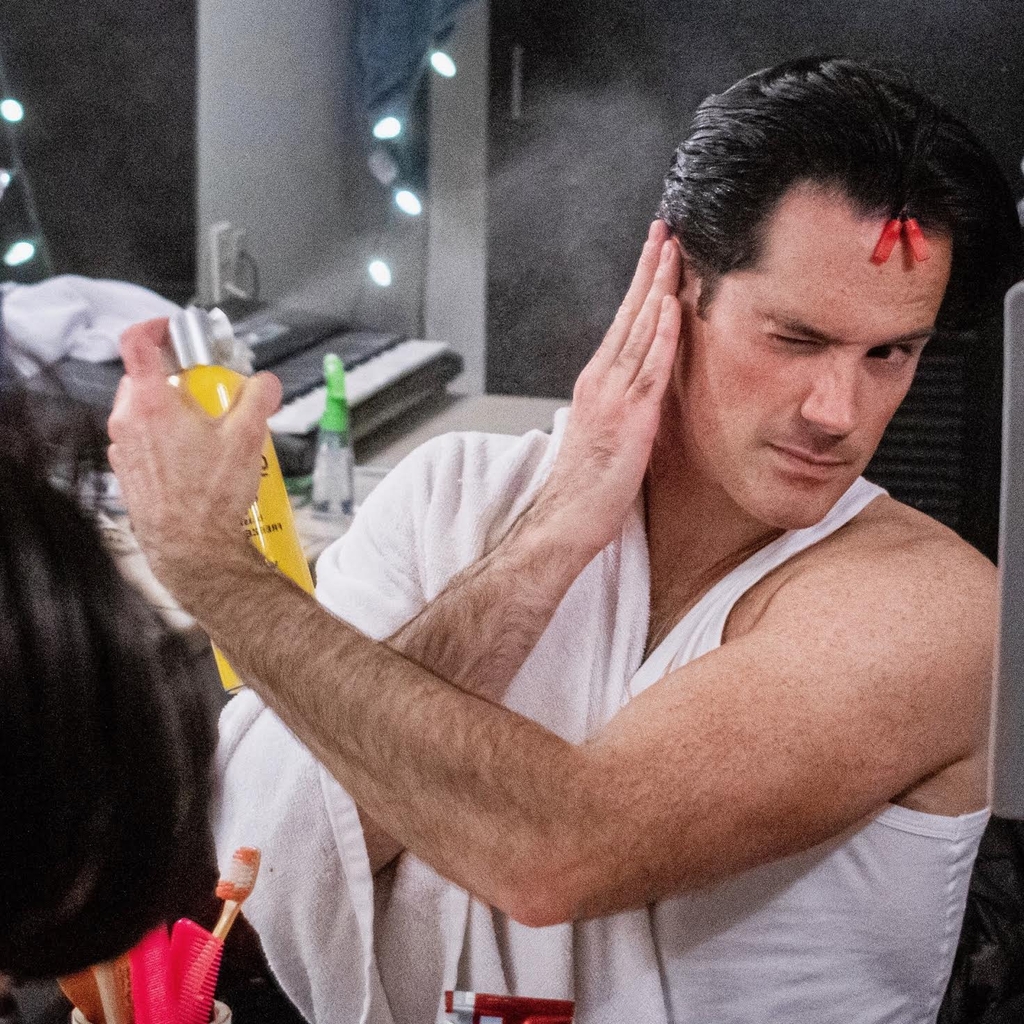
Once his hair is parted, swooped, slicked, set and dried into place with mousse, Rochette will will add the strong hold, low shine paste and work it deep into the roots. “The root of hair along your scalp is where it holds shape, not the tips,” he says. “Like any structure, the foundation is what holds the shape. I work in a strong hold paste, then I use a wooden brush to start shaping the style. And again — not straight back. I work in sections.”
Rochette recommends creating a clean part pretty far to one side before slicking back the sides back and up. “And take it all the way around the back. True pomps don’t neglect the back of your hair,” he adds. “The top is then swooped far to one side, then turns and comes back slightly. This swoop goes all the way to the part. Once the hair swoops across and turns back, I slick the other side, above the ear, back and up. Now you should have slicked sides and somewhat flat swoop on top. The next step is to give the swoop some height and lift forward. True pomps aren’t just high, the come out over the front. To achieve this, I use an old school black straight comb and carefully dig the teeth just 1/8th of an inch into the swoop, then slight pull the swoop as a whole forward. While doing so, you can pat the top of your hair with the other hand to help keep the entire shape from collapse or breaking apart.”
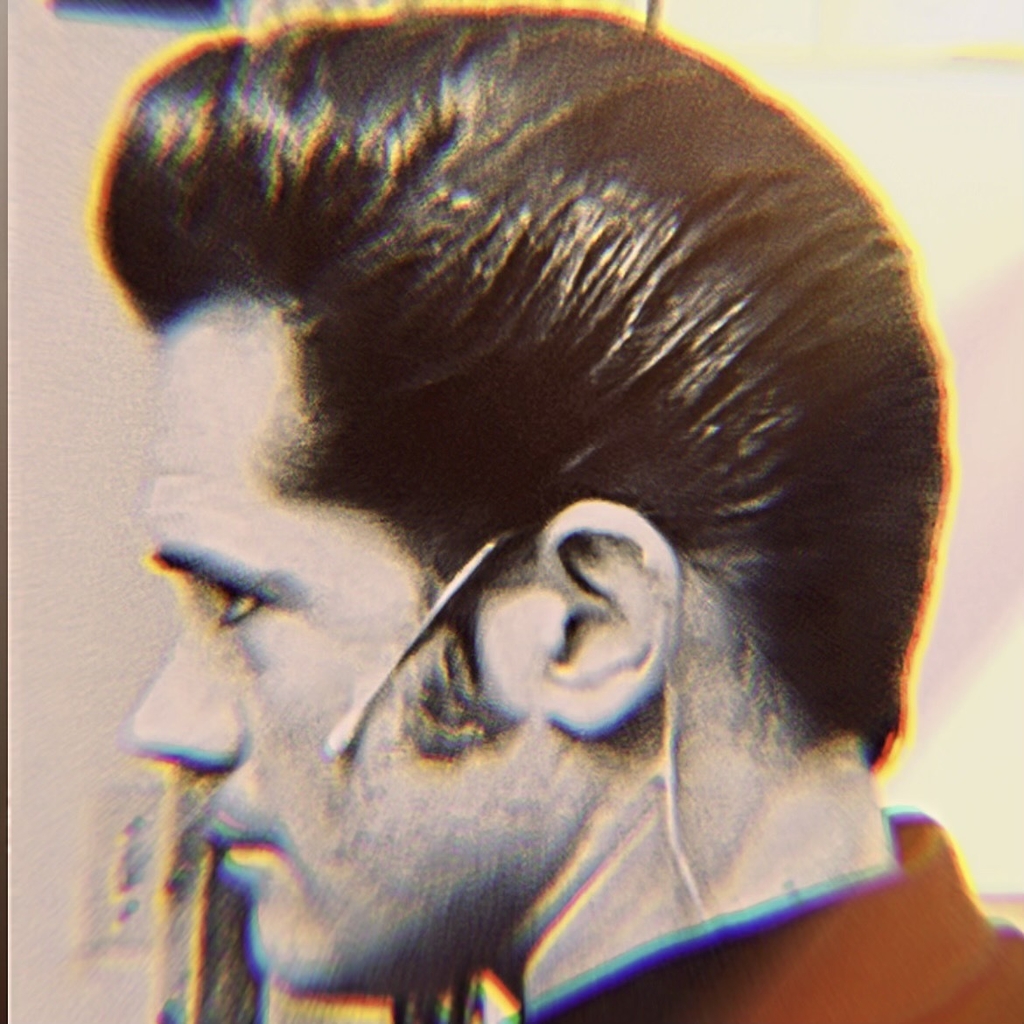
Remember: high in the front, low on the crown, and slicked back and up on sides and rear of head, according to Rochette. “Once this is done, and the shape is perfect, take your black straight comb and use one corner to do a single straight line from the crown down the back of head to your neck. This seals in the seam of the duck tail we created. And finally, when the shape is perfect, you add the hairspray. Spray, spray, spray, and spray some more damnit. Spray like your life depended on it. No amount is too much.”
Elvis loved his hair to fall out of its shape rather quickly, so early in his career he didn’t use hairspray. Just greasy pomades. But in most real life situations, the goal is to hold the shape. Therefore, strong hold hairspray.
“Once my hair is sprayed, hold it still until your hair dries and hardens, or use a blow dryer on a very light setting from a distance to dry spray manually, without pushing the shape out of place,” Rochette adds.
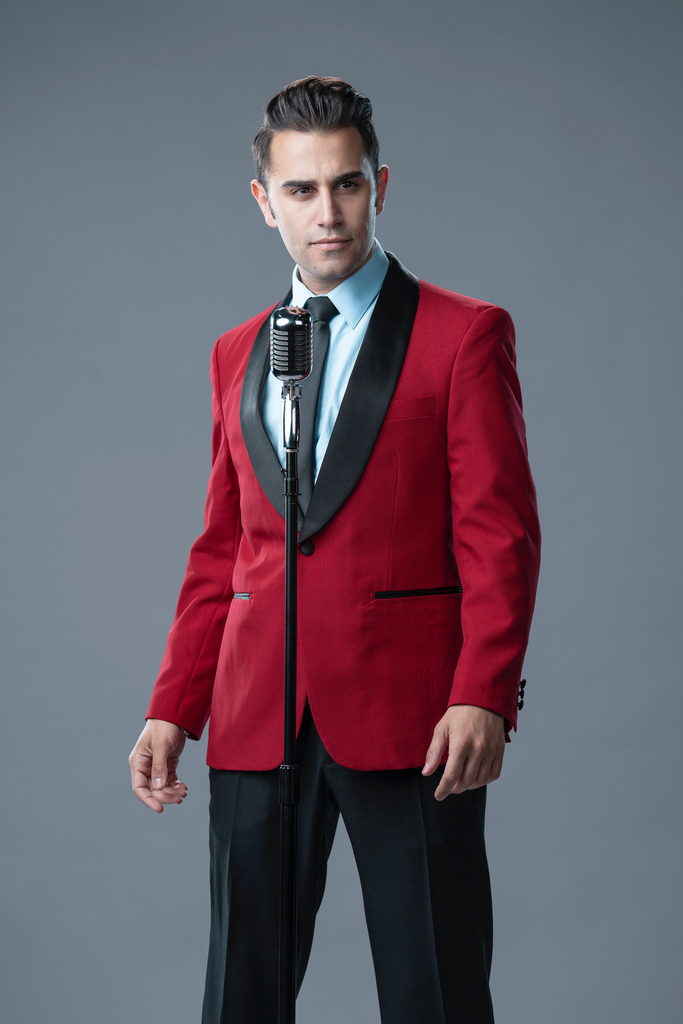
Cable’s approach is slightly different. Out of the shower with damp hair, he adds a little bit of the Crew -pomade and blow dries his hair into place using his hands to shape. “Then I fine tune and spray it into place. And, that’s it!” he says. “For a big pomp, it’s helpful to spray while blow drying. Keep shaping while you blow dry, add more spray, keep shaping and blowdrying, and spraying until it’s as high as you want.”
Skurnik also uses a blow-dry technique like Cable. “I wash the hairspray out of my hair after the show with shampoo and conditioner. The next day, when it’s time for the show, I wash with just conditioner, comb, blow dry it straight, and put a tiny bit of healing oil in. Then I put powder grip on the roots and rub it in so my hair is standing up straight. Shape and hairspray!,” he explains.
Like Rochette, Frace has a pretty rigorous process to perfect his pomp. “After showering, I lightly dry my hair with a soft towel leaving some wetness to the touch. I start with a quarter dollop of Suavecito Pomade into the palm of my hand, and work the product through the length of my hair from front to back. I then use the styling comb to run the pomade evenly through my hair. I like starting with the less-fine side of the comb. Comb back all the way, forward, and then back again. Establish your part using the edge of the fine side of the styling comb,” says Frace.
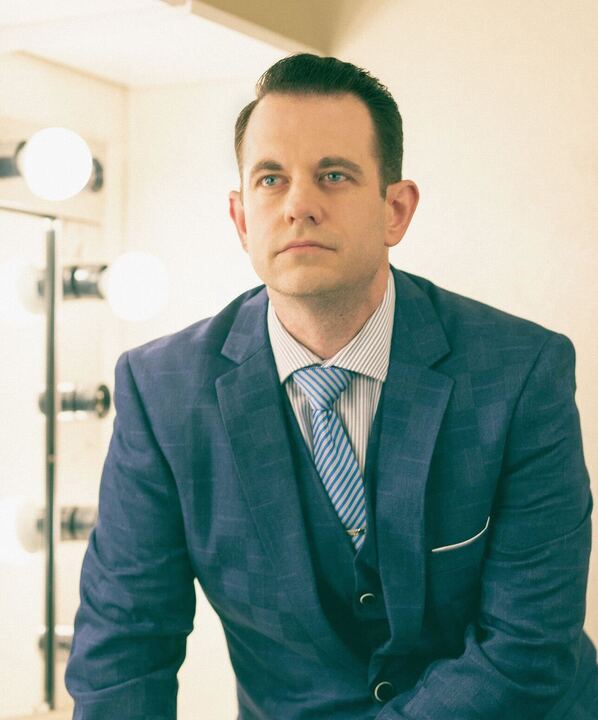
“Grab your blow dryer with the styling attachment and a rolling brush. Set your dryer on medium heat and use the rolling brush to create volume from the part to the side. With practice, use the rolling brush to create dimension and sculpt the pompadour. Clean up the edges and side of head with your styling comb or boar bristle brush. I like to use a hand mirror with another full length mirror to be able to ensure the integrity of the part and check for stray hairs associated with my cowlick in the back.”
Once his shape is established, Frace uses the Toppik building fibers with the help of the hand mirror to gently shake some thickening fibers over any pesky hair thinning areas. Or, he says you could use the Toppik spray applicator to lightly dust as another option.
“I finish with some Moroccanoil hairspray to set the look and ensure freedom from humidity. Use your hand lightly to smooth over any stray hairs with a spritz of spray. Finally, dab some after shave behind the ears to let the world know you are a man of class. The Clubman brand is a nod to the 1950’s look and classic style,” Frace says.
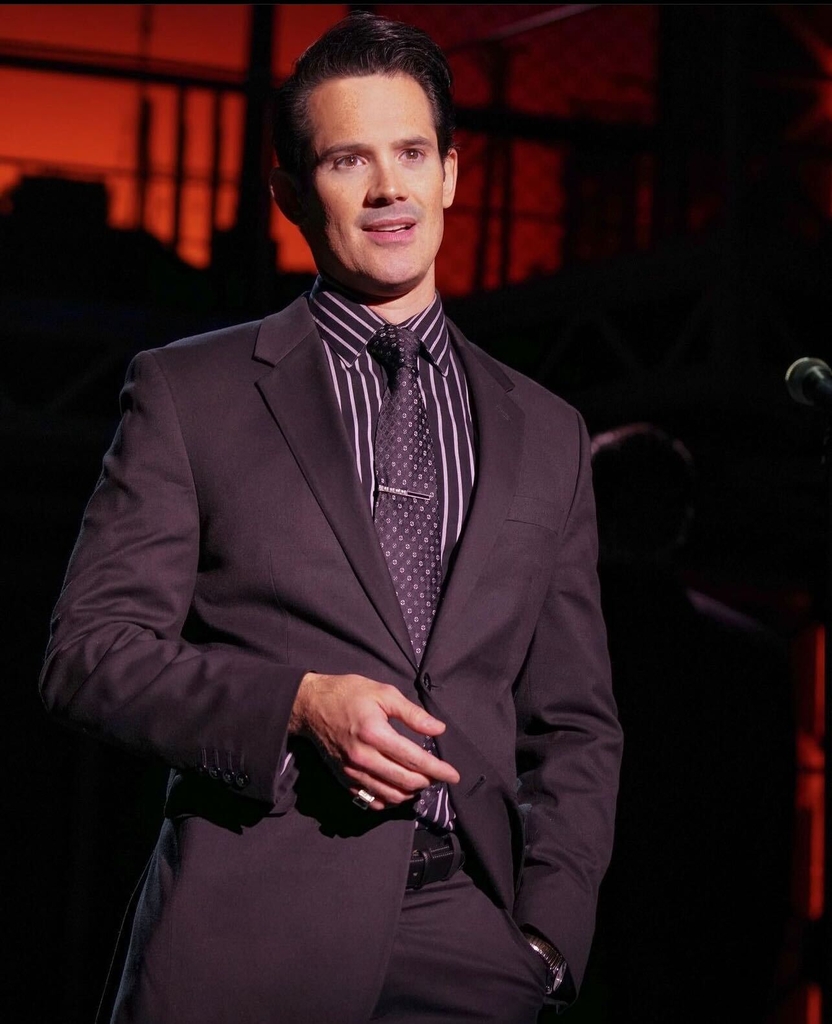
Frace promotes only throughly shampooing and conditioning the hair once or twice a week to maintain the integrity of the hair follicles and shape of the pompadour. “Washing too often can dry and dull my hair. But, if your hair is oily or feels unclean to the touch it’s time to wash,” he says. “Also, the more volume you achieve using the round brush and blow dryer, the higher the pompadour. Lastly, you want some length in your hair on top. You can fade the sides or have a heavy taper, but if you want a pompadour then you to need to have some hair to work with. I often just get the top of my hair lightly trimmed with a scissor comb for dimension.”
What should you ask for when you go to the barber shop to get a pompadour?

Working with a skilled styling barber is essential to keeping your hair healthy and manageable, and it’s important to choose a barber who is proficient in clipper and scissor cutting to achieve a solid pompadour.
“Make sure the stylist knows how to fade, taper, and scissor the style you are going for,” says Frace. “Often I will ‘comb’ through a stylist’s Instagram before committing — see what I did there? Key words to look for on a website are ‘rockabilly,’ ‘old school,’ and ‘retro.’ Those will usually indicate that a styling establishment has the staff on hand accustomed to dealing with pompadours. Or, if you see Suavecito or Layrite products in the window, you can likely discern you’re in the right place. Once you find the right stylist, stick with them.”
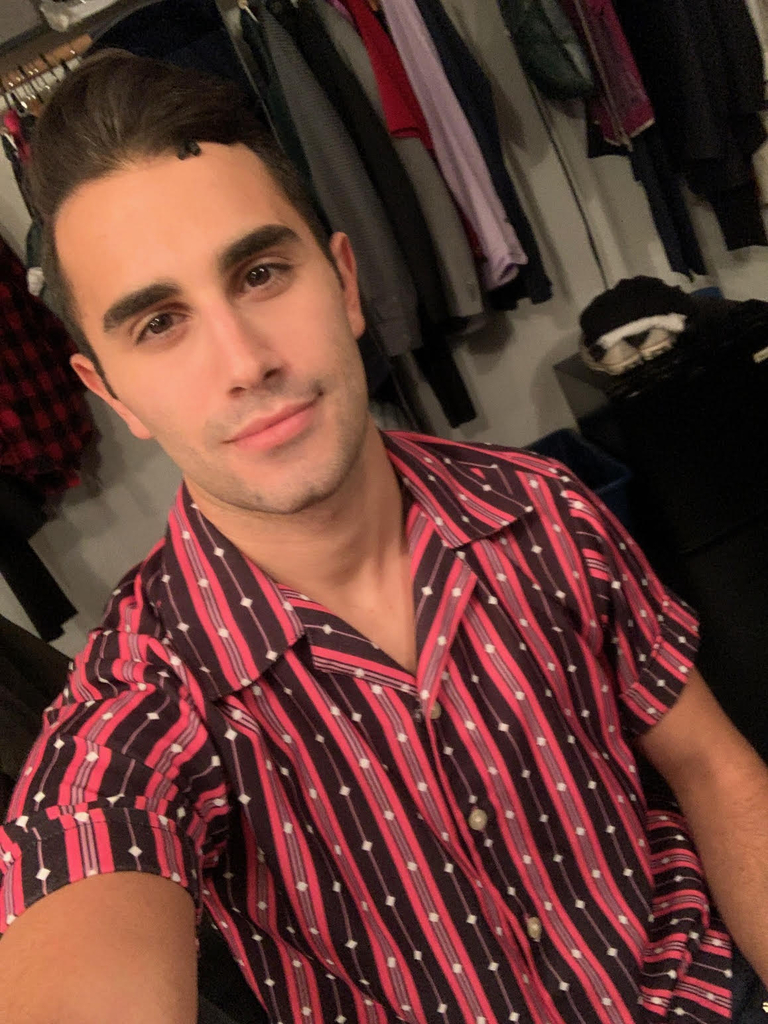
Jeacoma agrees with Frace on how to choose the barber shop. “If you’re gonna ask for a pomp, make sure you’re at the right barber, firstly. Some of these guys don’t know what the hell they’re doin’. A nice, classy joint with a classic barber vibe will do you right. Secondly, make sure it’s for the right reason. If you just want to look like you’re from the 50’s or 60’s and not because it fits your vibe, then you’re going to have a great pomp. But if it’s not part of your essence, you’ll look like you’re tryin’ too hard. Whatever you do, just rock it with confidence and maybe even get some clothes that fit the Pompadour too,” he says.
As for the specific numbered clippers to ask for, Cable recommends clipper 2 or 3 on the back and sides for a more contemporary look, and clipper 5 or 6 for a more classic look. “Ask them to fade to the desired length on top. The longer it is, the more work and blow drying it’ll take to hold shape.”
Skurnik says to cut the sides first and keep the top. “Try to style and see what needs to be cut off the top,” he adds.